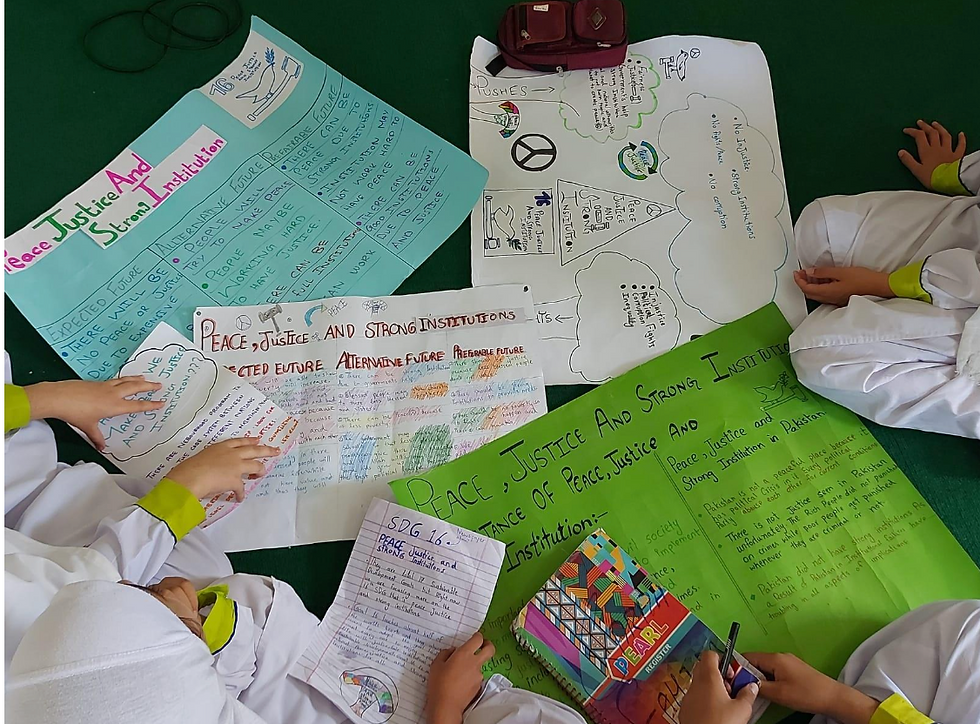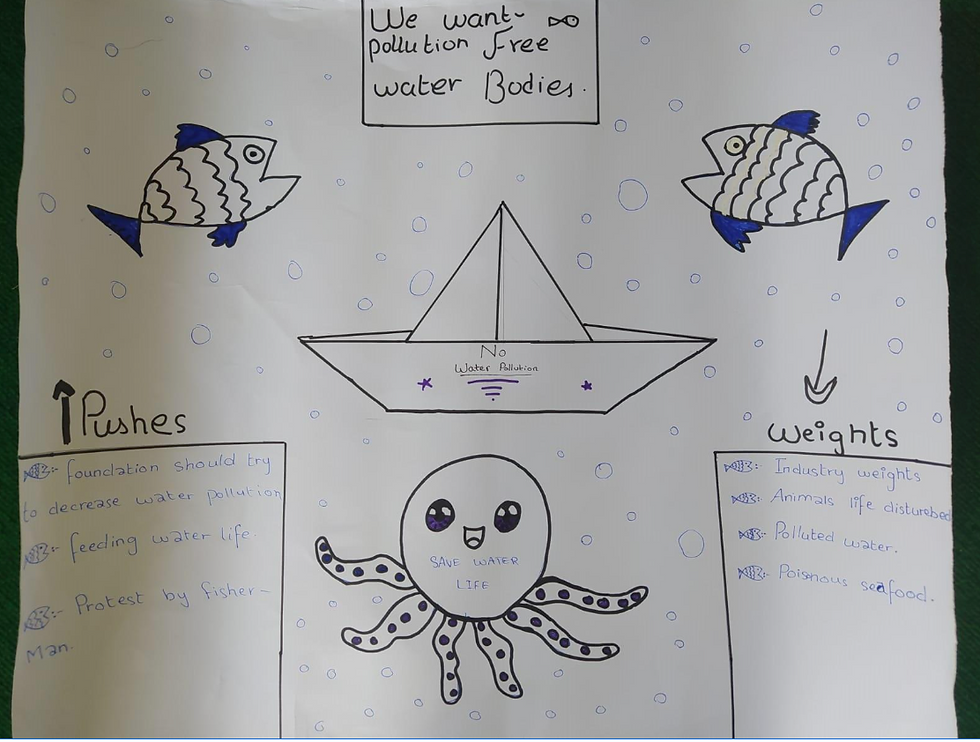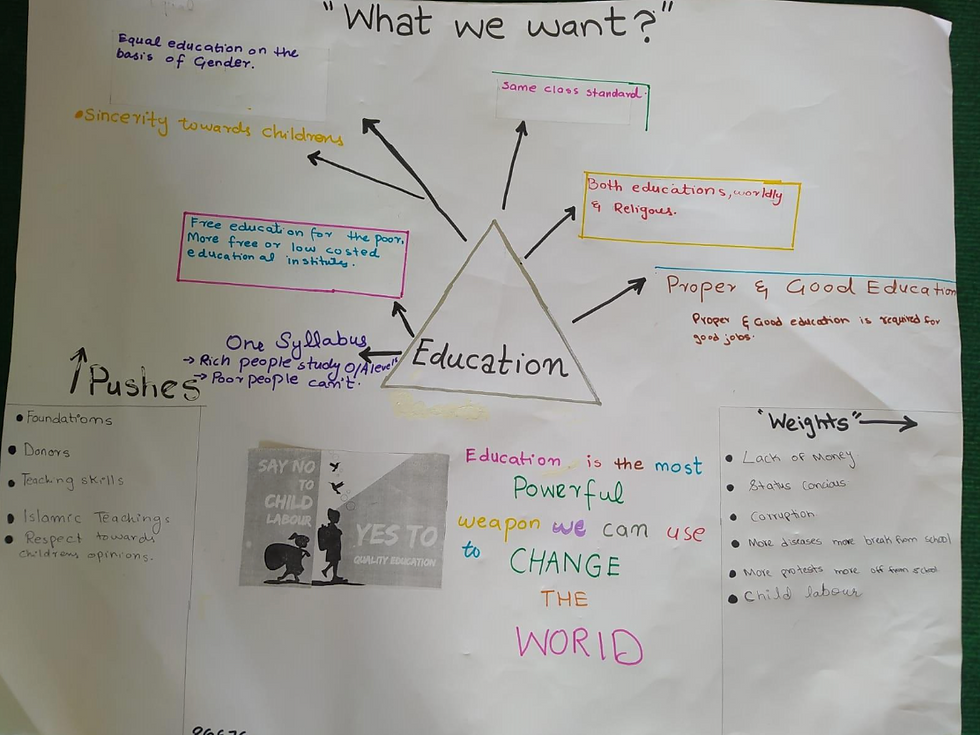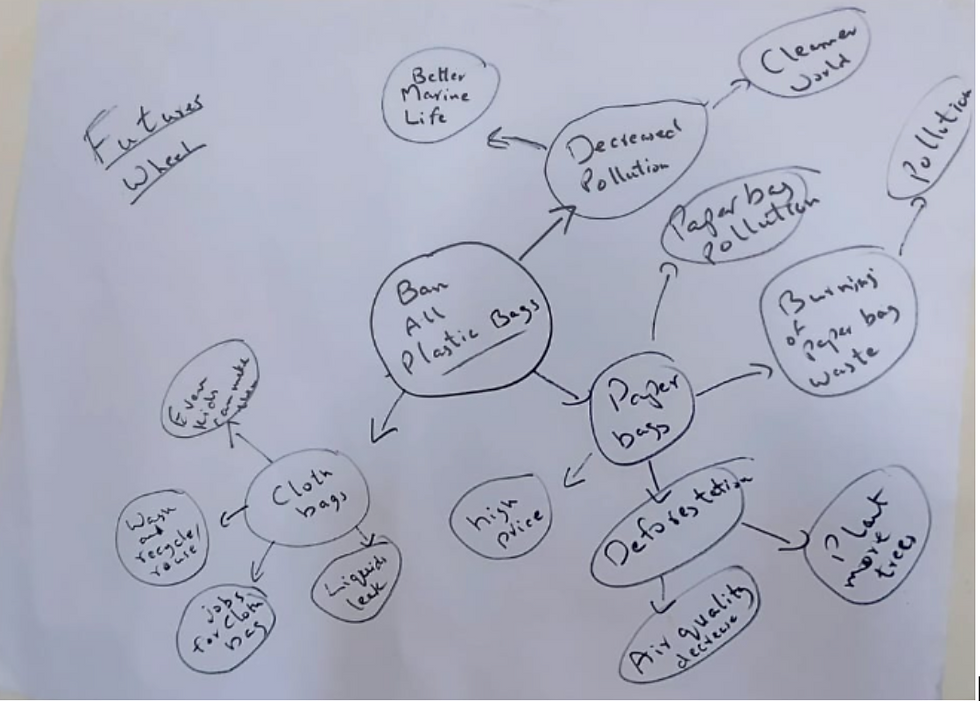Exploring the Futures Space at Unity International School
- Umar Sheraz

- Dec 8, 2022
- 6 min read
Updated: Feb 8, 2023
This blog is posted on behalf of Umar Sheraz, a futurist based in Islamabad, Pakistan and Sobia Irum, the high school coordinator at Unity International School, Islamabad.
As a practicing futurist, one concern that I always had was that we teach foresight to adults, but what about kids. At the end of the day, it is the future of the children of today that all adults contemplate about. We teach children our convoluted versions of history but why don’t we teach them about the future, in which they will be living tomorrow. By teaching them about the future, there is also scope for incorporating their views in the futures thinking process.
A few months ago I signed up as a mentor in the Future Leader Program conducted online by the Young Voices Network by Teach the Future. Teach the Future is a non-profit organization dedicated to improving future thinking skills in the lives of young people and teachers. It helps them understand the possibilities of the future in which they will live. Building on the Teach the Future Program, a Futures Thinking Program was designed for students at Unity International School, Islamabad, Pakistan to help the younger generations anticipate and influence the future. This series of interactive, fun and engaging workshops included separate sessions of girls and boys from class 6 to 8 and was expected to open young minds to many possible and surprising futures. The Futures Thinking Program, was divided into four class periods (of 45 minutes to 1 hour), and intended to support creative and critical thinking skills of young children. The design of this workshop borrowed ideas from the Futures Thinking Playbook, which is part of a collection of teaching materials available in the Teach the Future resources section.
Class 1
The introductory proceedings began with asking students about their thoughts about why it is important to think about the future. The responses included to have a successful life, to have a better future, to control climate change, for earning money, get a better job, etc. To make it simple for the students, an analogy was drawn about thinking about the future and piloting a ship at sea. You have to anticipate requirements, conditions and essential items before embarking on the journey. On inquiry the children responded with requirements of appropriate clothing, direction, maintenance, security from pirates, food/ drink and weather conditions as some essential things which need to be thought about before leaving for the sea journey.
The children were then introduced to the concept of trends, as observable change that happens over a period of time. The children discussed about different trends like food trends, digital games, fashion, political narratives, etc. Once they became well-versed with the concept, they were challenged to imagine what might happen if two randomly selected trends continued and were encouraged to discuss their effects in the future. This put them in overdrive mode and they imagined a world where digital game characters interacted with politicians and fashion trends merged with the ageing population.
Finally as part of their first class they were placed in groups and asked to come up with some trends for random objects like a rope, pen, mobile phone, class book, to name a few. The insights were very impressive and thought provoking. They imagined phenomena like deforestation and pollution as an effect of continued use of wooden chairs; the use of elephant poop to make paper for notebooks to address deforestation; higher usage of mobile phone resulting in disjointed families; future use of ropes for different purpose and usage of alternative material.
The classes were then given an assignment on interviewing an elder person in their family and thinking of how life has changed from the time when an older member of your family was their age compared to their life today. What’s a big difference between then and now?
Class 2
The 2nd class picked up from the last class about exploring trends from the lives of the student’s grandparents and parents. A common thread was the lack of technology, simple toys and how there used to be more time for family and social activities. This led to a discussion about Technology S-curves to explain that any trend is short-lived and not a good indicator of long term futures. Then an example of a “crow’s nest” on a ships top was given to elaborated how sailors used horizon scanning to look out for pirates, storms, land and any other emerging issue. The work of a futurist is like the person on the crow’s nest who guides the people on the ship’s deck to impending danger or land nearby.
The discussion then moved on to Sustainable Development Goals (SDGs) as actionable items which could be useful for using futures tools. For practice purposes, the SDG 1 on eliminating poverty was used, which has a goal to end poverty in all its forms everywhere by 2030.

To further the dialogue, the students were then asked to think around three future streams:
• What do you think is going to happen? (Expected, cause-effect thinking)
• What might happen instead? (Alternatives, contingent thinking)
• What do you want to happen? (Preferred, value-based thinking)
A dialogue with separate sessions of boys and girls, based on the above three future streams is presented below.

For their home assignment, the children were encouraged to think about which one of the 17 SDG challenges is most pressing in their community or which is near to their heart? They were also asked to comment on why they think addressing that particular SDG matters, in the context of Pakistan.
Based on their discussions, the participants were asked to make a chart about what they think are “expected”, “alternative” and “preferred futures” about the selected SDG in context of Pakistan?
Class 3
Continuing from the previous two classes about teaching the future, the dialogue about using SDGs for thinking about the future was continued. On a personal note, I felt that perhaps the children would choose the SDGs that are simple and more common. However, I got a pleasant surprise when a group of girls picked up SDG 17 (peace, justice and strong institutions) as their topic. On inquiring a little girl replied, “You told us that SDGs are interconnected. If we had justice in our country, the other SDGs would’ve taken care of themselves “.

To further the dialogue around thinking about the future, we used a Futures thinking tool called Futures triangle, for mapping the past, present and future to help explore the futures space. The participants were given the analogy of a spaceship that is moving towards a destination (a desired future); at the same time, it has weight(s) pulling it down and some pushes prompting it to move ahead.
In this regard we looked at the SDG 2 - No Hunger, as an example for the students. The students were then left on their own to think about their particular SDGs and map out the multiple forces of their particular issue in a Pakistani context.

I have seen many practitioners use the futures triangle but I must admit this was some of the more creative and delightful representations of the triangle that I’ve come across.

Class 4:
Building on the previous three classes about teaching the future, the dialogue about using SDGs for thinking about the future was continued. This time we tried to dig deeper by exploring “what if” questions to address the issues as envisaged by the SDGs. For this a futures tool called the Futures Wheel was employed. Asking “what if” questions helped imagine some pretty wild possibilities. For example, it was imagined that all plastic bags would be banned in Islamabad.

But then paper bags would be used which would result in deforestation, which in turn would affect air quality and paper bag pollution and burning would still be issues to ponder. If cloth bags were used as an alternative, the children wondered what would happen in case the fluids in their lunches leaked. They would be washable, reusable and even create jobs for making them. The kids were then encouraged to use proposed remedies to their respective SDGs as “what if” questions about the future. The session ended with questions and a vote of thanks.
Reflections on moving ahead
As a facilitator of four class sessions at Unity International School, I was very impressed with the level of attention I received from the students. They were inquisitive, engaged, followed the instructions, and were eager to share their thoughts and opinions. Some students came out to individually thank me for telling them about a thing such as the future and how to navigate it.
I regularly used resources provided by Teach the Future to make these learning engagements
practical and easy. The large variety of resources at the virtual library as well as insights from the Future Leader Program, made it easy to tailor a lesson for specific age groups. Since these were one hour sessions, the structured lessons also helped in keeping within time limits.
It is time that we start talking to our school principals and administrators, about including teaching about the future in their school curriculum. Our children are going to live in a challenging and uncertain future. We can help them by giving them some clues about what the future holds for them and how to navigate that future space.

